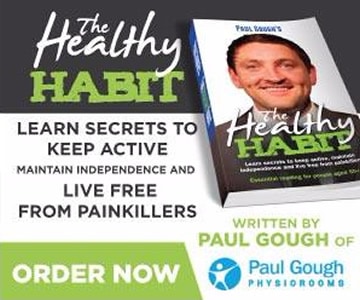Recently I received this interesting question from a repeat reader of the column, currently suffering with chronic back pain who asked about yoga:
“Paul, having suffered with on-off type back pain for over 8 years, and now intrigued by what a friend told me about yoga and how it might be able to help me, I’d like to know a little more about it. “
Angela. 56. Hartlepool.
Ok, let’s talk about “Yoga”… and I’ll do it the context of helping you understand why things like chronic back pain happens, and why you might be feeling so “stiff” and restricted. See, between 30 and 40, recovery from any physical activity begins to take that little bit longer.
As the post-activity aches and pains become more noticeable, particularly the next morning, doing yoga is going to make a positive difference to the speed at which you will recover from playing golf, walking with friends, being in the garden or playing five-a-side football – even cleaning the house.
Doing regular yoga stretches will dramatically affect the flexibility and control of your muscles – in a good way. That’s because yoga acts like a counterbalance to your muscles’ shortening and ensures that when needed, they will flex and stretch safely.
This will hugely reduce your chances of becoming injured in the first place. It also means that the muscles will return to their original length more quickly after exercise and when this happens, you’ll get fewer next-day aches and pains.
To understand this better, think how it feels when you take a long walk for the first time in a while, or spend the first day of spring in the garden after a few months of being absent from it – inevitably the next day can be pretty tough with muscles feeling stiff and tight and your body just generally achy.
This happens because muscles have been stretched further than they have been used to in a while. That pain the next day is these muscles shortening after the blood supply has stopped and not wanting to move until your body can work out a way to help them relax.
The theory behind Yoga is that it improves your breathing (great for easing back pain), control and balance and aims to make all the muscles you’re likely to use during physical activity more efficient, saving you energy and helping you feel healthier as a result.
Improving balance reduces injury and if your muscles are working more efficiently, they are likely to produce less of the nasty substances such as lactic acid (a chemical released in your system after exercise) which can contribute to that next-day soreness too.
If you do begin to start a few yoga routines, it’s important for you to understand that little and often is more beneficial than doing a lot occasionally, and that your progress is going to be slow. You may not feel or see any difference for months – but it will be starting to work.
So don’t walk away at the end of your first class and expect immediate changes, because it isn’t going to happen. There’s more on this type of thing when you visit the website of my new book, www.thehealthyhabitbook.com.
Paul Gough
Author of “The Healthy Habit” book.


